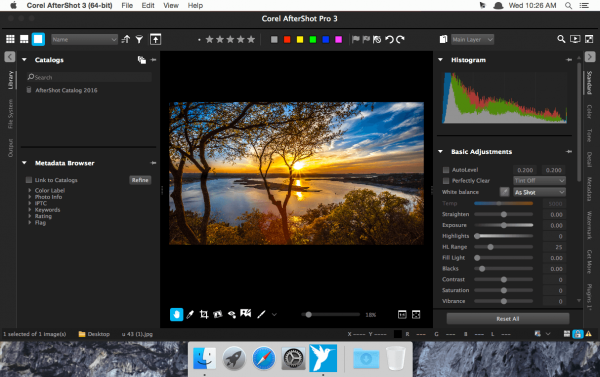
It’s more about the way they’re presented and interact with one another. There’s an array of audiences catered for in our six candidates, and intentionally so, but none of these packages is short on features. Who’s the software aimed at, and should it matter in terms of ease of use? If it’s faster to use one app for taking care of where photos are stored and finding them and another to do the editing, that’s fine by us. Not all of the apps listed can do all of those things, of course, but while there’s a fair emphasis on features what really counts is speed, ease of use and the end result. We challenged each application to catalogue a library of several thousand images, and looked at how it coped with developing RAW files, editing photos in JPG format and batch processing resize jobs and filters. The basic tests, however, were standardised as much as possible. It’s hard to directly compare a lot of the software here, since it’s all been developed with slightly different purposes in mind. Disagree with our choices? Email us at Our selection It feels wrong, but it’s the right thing to do. It has been updated since we last looked at it, though, so we’re going to revisit it at the expense of a truly FOSS alternative.
#Corel aftershot pro 3 vs picasa full
It’s the gold standard for RAW image editing on Linux, but it’s also closed source and not terribly cheap either, at $59.99 for the full version.
#Corel aftershot pro 3 vs picasa pro
The real controversy, in fact, is whether or not to include Corel’s AfterShot Pro – nee Bibble – in the roundup. Leaving them out of this roundup would be to not consider the very best.

Likewise, you may already know more than you could ever want to about the Gnome and KDE staples Shotwell and digiKam – but they’re the de facto choice for a reason. Gimp, although covered ad nauseam elsewhere, can’t be overlooked when it comes to an allround package for post-processing shots. Inevitably, there are some familiar faces. There’s such a staggering amount of choice, in fact, that whittling them down to just six for this roundup involved making some very tough decisions about what software to include and what to leave out. It’s entirely possible to run a professional studio without the aid of Windows or a Mac these days.

There may be no Adobe- or Apple branded software designed for Linux yet – and would we want it if there was?īut there are more than enough serious, mature packages for everything from basic library management to RAW development.

There’s still a lot of prejudice against Linux amongst photo enthusiasts and pros, but the time at which our favourite operating system wasn’t taken seriously for image manipulation is long past.


 0 kommentar(er)
0 kommentar(er)
